
Taczanowski is the surname of a Polish szlachta (nobility) family from Poznań bearing the Jastrzębiec coat of arms and the motto: Plus penser que dire. They took their name from their estate Taczanów in the 15th century and by the 19th century were among the leading magnates in partitioned-Poland. Members of the family are historically significant religious, political, scientific, and military figures. The family was granted the title of count by King Friedrich Wilhelm IV of Prussia in 1857. The Austrian branch of the family, which spells the name Dassanowsky, came to Vienna with the forces of King Jan Sobieski during the Battle of Vienna in 1683.

The House of Fürstenberg is the name of a German noble family of Westphalia, which descended from Hermannus de Vorstenberg. He was a liegeman of the Archbishop of Cologne, who was among the prince electors of the Holy Roman Empire. Hermannus held a castle for his lord called Fürstenberg at Ense-Höingen in Soest; this castle would give the family its name. His son was Wilhelm von Vorstenberg, the Justiciar and Castellan of Werl.
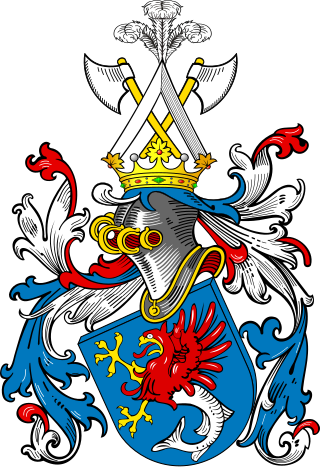
The Puttkamer family is a widely extended German noble family whose earliest ancestor is first recorded between 1257 and 1260 in Schlawe (Sławno), Farther Pomerania.

The House of Finck von Finckenstein is a noble family classified as Uradel. It is one of the oldest Prussian aristocratic families extant, dating back to the 12th century in the Duchy of Carinthia.
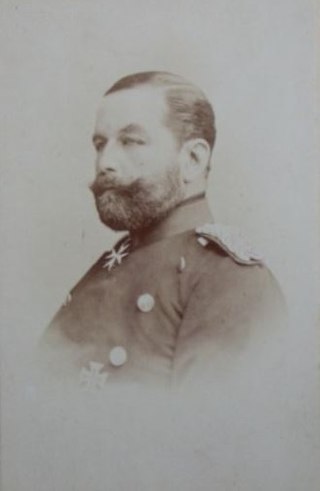
Ernst Karl Ferdinand von Prittwitz und Gaffron was a Royal Prussian Lieutenant General and Knight of Justice of the Order of Saint John.
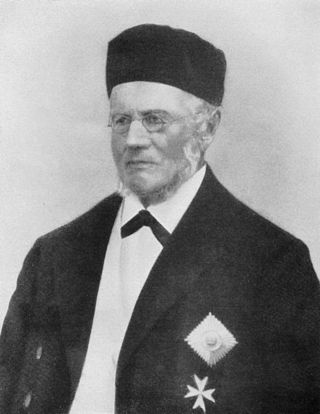
Gustav Reinhold Ludwig von Wienskowski gen. von Saltzwedel was a Prussian politician and public official.
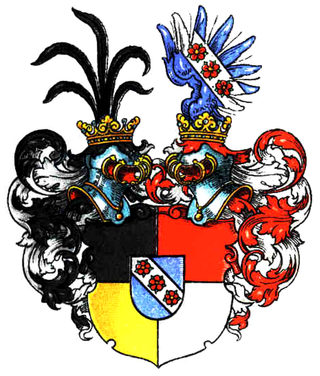
The Dyhrn family is an old German noble family originally from Saxony.

Hermann Christlieb Matthäus Stein, from 1913 von Stein was a Prussian officer, General of the Artillery and Minister of War during World War I. He was a recipient of Pour le Mérite.
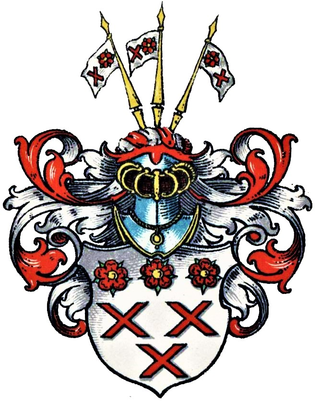
The Dincklage family is a German noble family of Westphalian ancient nobility from Dinklage near Vechta, Lower Saxony. There are currently still two lines of the family: the Campe line and the Schulenburg line. The family is first attested in 1231 with Johannes de Thinclage. The males of the family carry the title Baron or Freiherr.
Karl Wilhelm Heinrich von Kleist was a Prussian officer of the Imperial German Army, most recently General of the Cavalry (Germany). On the occasion of his 50th anniversary of service in 1906, Kleist was promoted to General of Cavalry.

Henning Alexander von Kleist (1676/77–1749) was an 18th-century Prussian field marshal. He fought in the War of Spanish Succession, the Great Northern War, and in the Wars of Austrian Succession. In particular, his actions at the Battle of Mollwitz brought him acclaim, although he had long been a stalwart supporter of Prussian military developments by the Prussian kings Frederick (1740–1786) and Frederick William I (1713–1740).
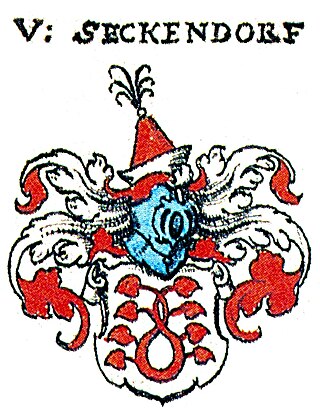
The House of Seckendorff is the name of an old and prolific Franconian noble family. According to historian Werner Wagenhöfer, the Seckendorff family is the most researched family of the low nobility in Franconia along with the Guttenberg and Bibra families.
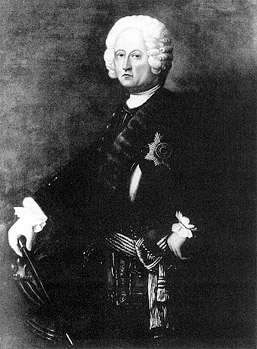
Christian Nicolaus von Linger was a Prussian general. He was chief of the Prussian artillery from 1716. In his 67-year military career, he served three monarchs in six wars, and founded the Prussian artillery arm of the military. He was appointed the first General of the Artillery by King Frederick II in 1744.

Maydell is the name of a Baltic-German noble family and part of the Uradel. The family lived in Estonia for several centuries and was one of its notable families. In documents and texts from earlier centuries, the family name is occasionally written Maydel or Maidel.
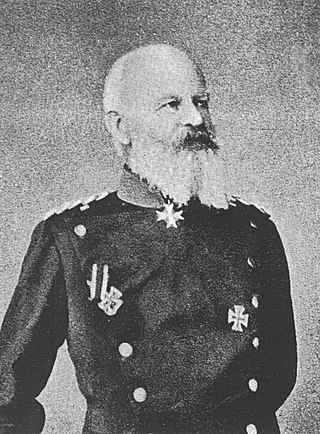
Theodor Alexander Viktor Ernst von Schoeler (1807-1894) was a Prussian General of the Infantry who served in the Austro-Prussian War and the Franco-Prussian War through several battles.

Oskar Freiherr von Zoller was a Bavarian Lieutenant general who was known for serving at the Battle of Kissingen during the Austro-Prussian War, being killed during the fighting.

The House of Poschinger is an ancient Bavarian noble family. Its origin date back to the year 1140. The family received the rank of Knights of the Holy Roman Empire. The Frauenau branch rose to the rank of Barons (Freiherr) in the Kingdom of Bavaria and held a hereditary seat in the House of Councillors.
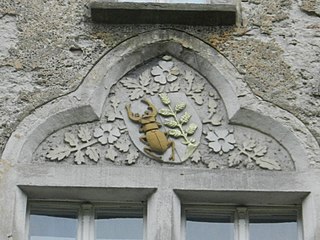
The von Schroeter family is a German noble family originally from the region of Wroclaw.

The von der Osten family [ ˈoːstən ] is an ancient and distinguished aristocratic family from Pomerania that has been established in Pomerania since 1248, originally from Stift Bremen. The family's ancestral home is in Lower Saxony, near the Oste River. The family acquired numerous properties in Western and Eastern Pomerania, becoming one of the largest landowners in Pomerania. In 1854, the von der Ostens were one of the first ten families to hold the hereditary right of presentation to the Prussian House of Lords.

The Dassel family alternatively House of Dassel or Dassel-Wellersen is a Patrician noble family from Lower Saxony, which is named after the Town of Dassel, formerly seat of the Dukes of Dassel. There are several offsprings of the lineage which originates in the 13th century. The most prominent is an extinct line in Lüneburg. More recent offsprings include Georg Dassel who built the Dassel Mansion in Allagen.


















